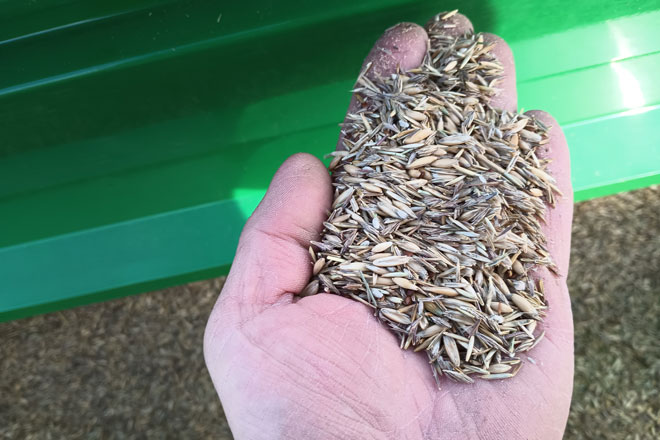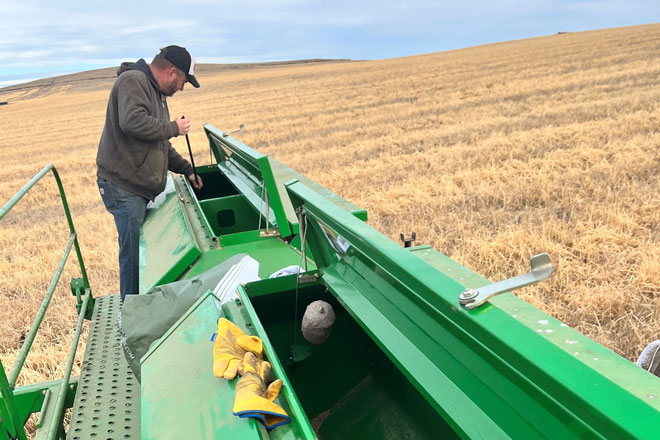Beyond hunting: Fall and winter are habitat seasons too
By Austin Lang, PF Precision Ag & Conservation Specialist in North Dakota
Fall heralds a season of promise not just for hunters but also for a distinctive and environmentally impactful practice: dormant seeding habitat.
This approach to habitat restoration, particularly in the northern states, has the potential to transform designated lands into thriving ecosystems. While spring seeding remains a preferred method among habitat managers, dormant seeding presents unique advantages when executed thoughtfully.
Dormant seeding habitat involves sowing seeds during the late fall or winter when the ground is cold, typically seeking soil temperatures below 40°F. This technique capitalizes on the natural processes of freezing and thawing, ensuring that seeds lie dormant until optimal conditions for germination arise in the spring.

BENEFITS OF DORMANT SEEDING
Enhanced Germination Rates
Dormant seeding habitat leverages the natural stratification process, where seeds undergo a period of cold temperatures, breaking dormancy and promoting germination in the spring. This results in higher germination rates and good initial plant growth.
Weed Suppression
Introducing native plants during the dormant season minimizes competition with weeds. Native species, adapted to the local environment, outcompete invasive plants. This contributes to the overall health and biodiversity of the habitat.
Optimized Time Window for Labor Availability
Dormant seeding spreads out the planting window, allowing for timely sowing when equipment and labor are more readily available. This can be crucial, especially when relying on rented equipment or hired labor, which is often scarce during the spring planting season.
Ability to Seed in Marginal Areas
Dormant seeding provides an opportunity to seed into challenging areas, such as those excessively wet in the spring, which may not be suited for seeding until early or mid-summer. This reduces the risk of equipment getting stuck in the mud and allows access to areas otherwise inaccessible in the traditional spring window.
CONSIDERATIONS FOR DORMANT SEEDING
The benefits of dormant seeding are real. But several considerations must be factored in.
Weed Control
Adequate weed control before dormant seeding is crucial. Depending on your mix, herbicide options may be limited once the seeds emerge in the spring.
Ground Cover
In the northern U.S. it is generally favorable to dormant seed into stubble. Seeding into black-tilled ground can cause large temperature swings in the spring as the ground heats up from the sun, and then Cools rapidly at night. This can cause the planted seeds to germinate before air and soil temps are warm enough to support seedlings. The cover of stubble moderates temperature fluctuations, mimicking natural conditions and improving success.
Species
Cool-season species tend to perform better with dormant seeding, but a mix of both cool and warm season can be used. If you are using cost-share to establish cover, check the program restrictions, as they may prohibit planting warm-season species or native wildflowers during the dormant season.
A REAL-LIFE SCENARIO IN NORTH DAKOTA
Pheasants Forever in North Dakota participated in a dormant seeding project with the Wozu program on the Standing Rock Reservation.

Wozu, a 501(c)3 non-profit near Cannonball, North Dakota, focuses on land restoration and soil health improvement as one of several of their directives. Working with Wozu’s Executive Director Steve Sitting Bear and Wozu’s Land & Water Manager Dave Archambault, I made recommendations and provided assistance for the 350-acre project. A local cooperator, Ray Schmidt Jr., also helped with custom seeding to get the planting accomplished.
Originally planned for seeding in the spring 2023, excessive weed pressure led to a decision to plant hay forages and use herbicide for weed control during the growing season. The option to dormant seed became a strategic choice for Dave to address specific weed pressures. It also allowed him to take advantage of further options for custom-hire seeding than what are normally available in the spring.
This seeding stands as a move towards environmental stewardship by integrating restored lands into a working-lands agriculture system. This holistic approach aligns with sustainable land management practices, striking a harmonious balance between agriculture and conservation.
The late fall and early winter seasons, traditionally a time of excitement and connection for hunting, can become an opportunity to create lasting habitat for years to come through dormant seeding. In this way, the dormant season becomes not just a period of rest for the land but a time of promise and renewal.